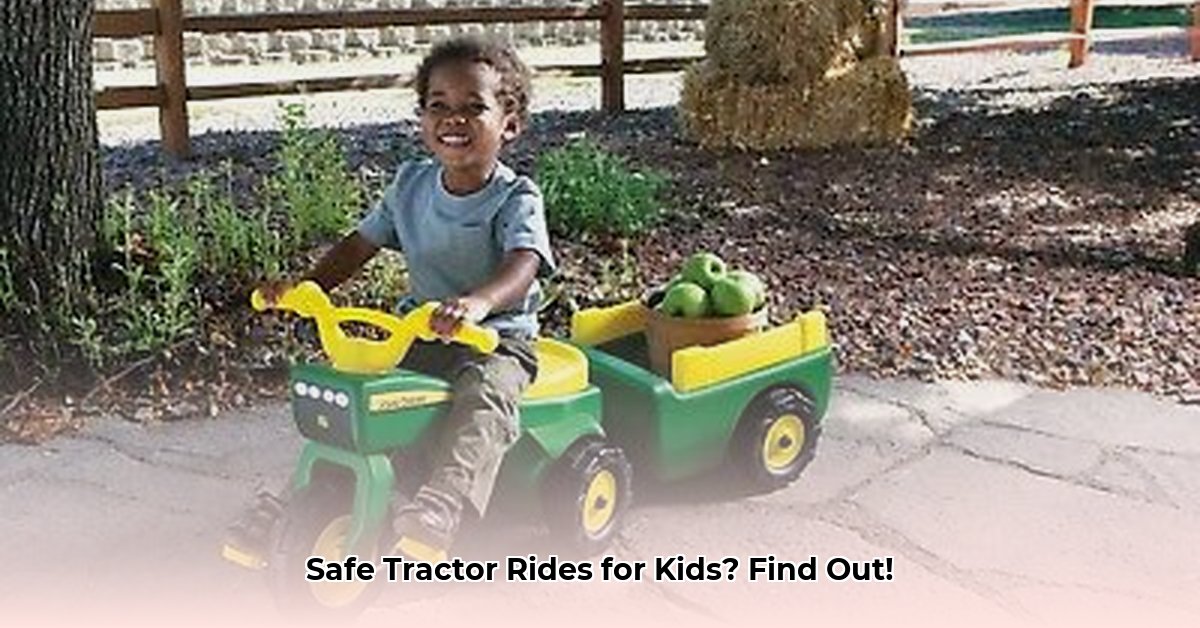
Kids' Ride-On Tractors: A Joyful Journey into Learning and Play
The sight of a child's face beaming with delight as they expertly navigate their miniature tractor is a truly heartwarming experience. But beyond the sheer fun, these toys offer a wealth of developmental benefits. This comprehensive guide helps parents choose the safest and most enriching ride-on tractor for their child, transforming playtime into a valuable learning experience. For more detailed information, check out this helpful resource on kids' ride-on tractors.
The Rise of Ride-On Tractors: A Market Overview
The market for children's ride-on tractors is experiencing significant growth, driven by parents seeking engaging and educational toys. This surge in popularity highlights the desire for playthings that combine entertainment with developmental advantages. While safety remains paramount, the competitive landscape offers a wide array of options catering to diverse needs and budgets.
Educational Benefits: More Than Just Fun
Ride-on tractors aren't just entertaining; they offer a surprising array of educational benefits. They boost:
- STEM Skills: Problem-solving is inherent in operating the tractor, fostering critical thinking and spatial reasoning.
- Gross Motor Skills: Steering, pedaling (for pedal tractors), and maneuvering enhance coordination, balance, and physical dexterity.
- Imaginative Play: Pretend scenarios—farming, construction, racing—fuel creativity, storytelling, and social-emotional development.
Safety First: Protecting Your Little Farmer
Safety is paramount. Prioritize these crucial steps:
- Constant Supervision: Never leave young children unsupervised while operating a ride-on tractor.
- Age Appropriateness: Always choose a tractor designed for your child's age and weight. Smaller tractors are suitable for younger children. Check weight limits carefully!
- Reputable Brands: Select tractors from established brands known for their commitment to safety standards and quality construction.
- Regular Inspection: Regularly check the tractor for any signs of wear or damage, ensuring it remains structurally sound and safe.
Dr. Emily Carter, Child Development Specialist at the University of California, Berkeley, emphasizes, "Constant adult supervision is crucial. Matching the tractor to the child's size and developmental stage minimizes the risk of accidents and maximizes the learning opportunity."
Choosing the Perfect Tractor: A Parent's Guide
Selecting the right ride-on tractor involves thoughtful consideration:
- Age and Size: Match the tractor's dimensions and features to your child's age and physical capabilities. Smaller models are ideal for toddlers.
- Power Source: Battery-powered tractors are generally easier for young children to operate, while pedal-powered models promote physical activity for older kids.
- Features: Realistic sounds and electronic controls enhance engagement, but prioritize safety and durability over unnecessary features.
- Durability and Materials: Opt for robust construction using high-quality materials that can withstand regular use. Look for sturdy wheels and a well-built frame.
- Price: Set a realistic budget and compare features across different models before committing to a purchase.
Expanding Playtime: Activities and Creative Adventures
Transform playtime into an enriching experience:
- Role-Playing: Encourage imaginative scenarios—farming, construction, racing—to stimulate creativity and storytelling.
- Educational Games: Incorporate numbers, colors, or simple counting into the play to subtly integrate learning.
- Obstacle Courses: Create a safe obstacle course in your backyard to improve problem-solving and coordination skills. Remember to always supervise!
- Storytelling: Let your child create their own narratives featuring their tractor, fostering language development and imaginative thinking.
Maintaining Your Child's Tractor: Simple Care Tips
Extend its lifespan with these simple steps:
- Regular Cleaning: Wipe down the tractor after each use to remove dirt and debris.
- Inspection for Damage: Regularly check for loose parts, cracks, or any signs of wear.
- Proper Storage: Store indoors to protect it from the elements and prolong its life.
Frequently Asked Questions (FAQs) about Kids' Ride-On Tractors
Q: What are the age recommendations for ride-on tractors?
A: Age recommendations vary by model, but generally, smaller tractors are for toddlers (ages 1-3), while larger models are for preschoolers and older (ages 3+). Always check the manufacturer's guidelines.
Q: Are battery or pedal-powered tractors better?
A: It depends on your child's age and developmental stage. Battery-powered is often simpler for younger toddlers. Pedal-powered promotes physical activity for older children.
Q: What safety features should I look for?
A: Look for features like seatbelts (if appropriate for the age), sturdy wheels, and a stable, low center of gravity. Avoid sharp edges or potential pinching points.
This comprehensive guide empowers you to make an informed decision, ensuring your child enjoys years of safe and enriching adventures with their very own ride-on tractor. Remember, thoughtful selection and responsible use contribute to positive playtime experiences.